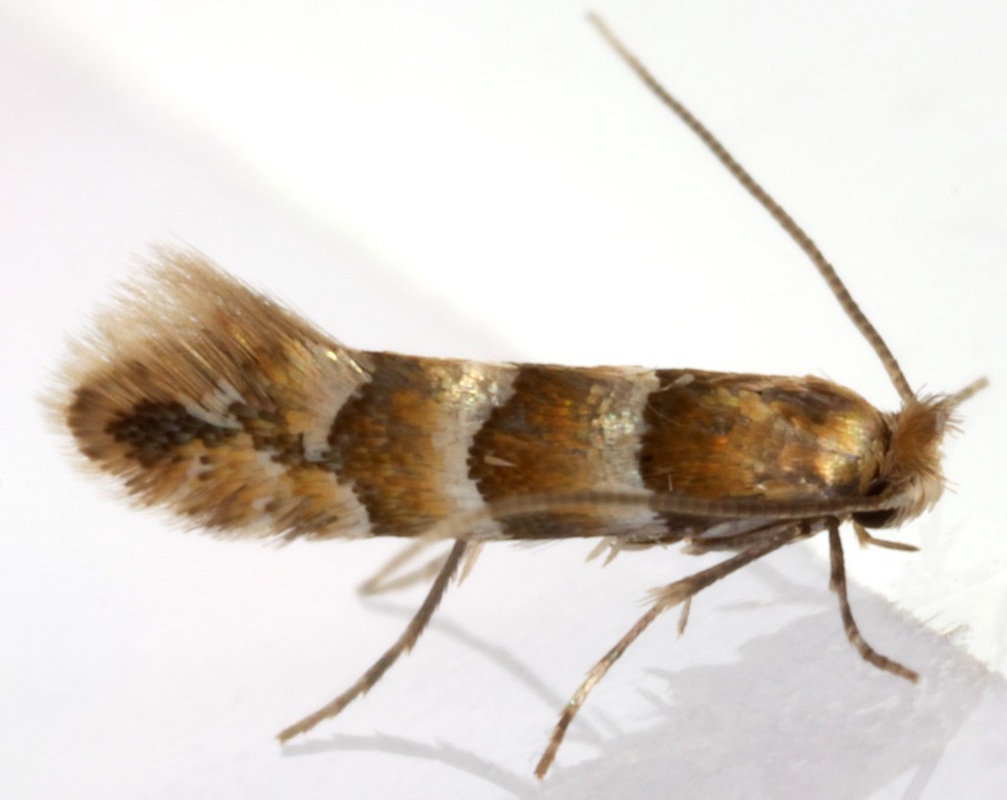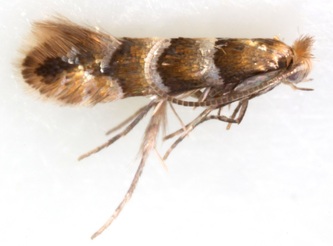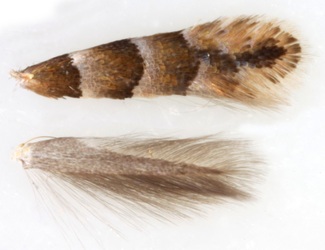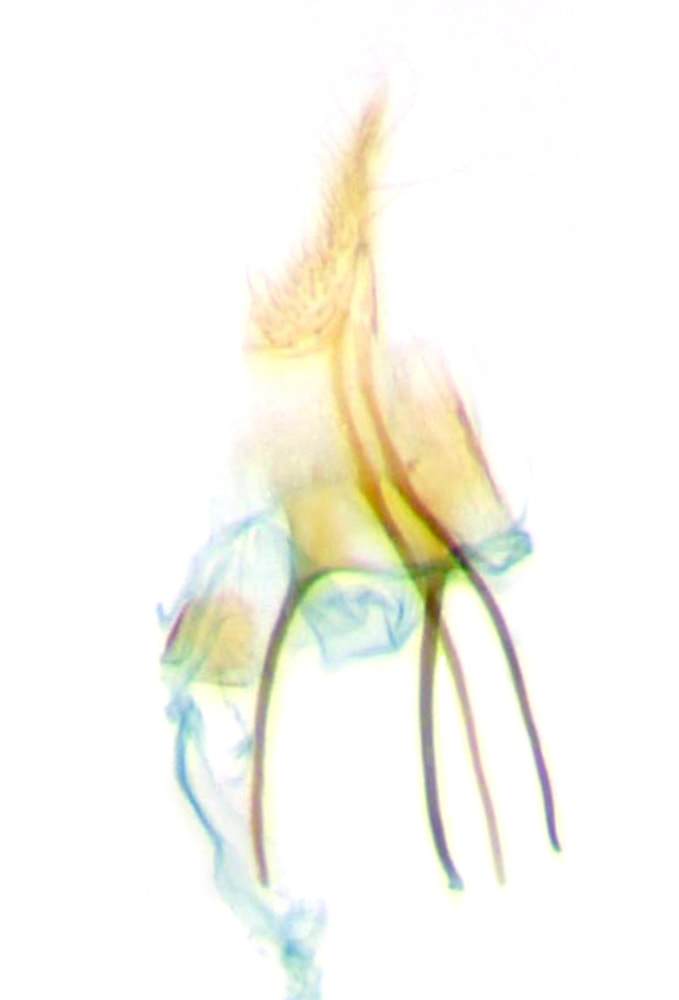15.081 Phyllonorycter nicellii (Hazel Leaf-miner)
ws: 7-8mm; bivoltine May, Aug; hazel (Corylus avellana); common throughout UK.
ID: Group B - Forewing markings white on a coloured background, C1D1 and C2D2 forming complete transverse fasciae; C3D3 almost meet to form an angled fascia; 4(5)C4D with D4 distal to tornus > P.nicellii
P.schreberella has a metallic silvery thorax.
P.trifasciella has the black proximal border broader than the white fasciae.
P.emberizaepennella has a white basal streak.
P.scabiosella has the antenna banded fuscous to the apex.
P.stettinensis has a black vertical tuft.
P.tristrigella often has a short white basal streak, the white fasciae are much less metallic, it lacks the dark line at base of apical cilia and shows no sign of D4 or C5, C4 is usually present as a white line connecting the junction of C3D3 to the costa.
P.froelichiella is larger (ws9-10mm), it has neat narrow black proximal borders to the white fasciae, C3D3 curve to meet at ~90 deg and there is no sign of D4 beyond the tornus and it has a metallic golden thorax.
P.klemanella is the most similar, C3D3 are more widely separated, not nearly meeting to form a 3rd angled fascia as in P.nicellii. The black proximal borders to the fascia shade into orange in P.klemanella and brown in P.nicellii.
P.schreberella has a metallic silvery thorax.
P.trifasciella has the black proximal border broader than the white fasciae.
P.emberizaepennella has a white basal streak.
P.scabiosella has the antenna banded fuscous to the apex.
P.stettinensis has a black vertical tuft.
P.tristrigella often has a short white basal streak, the white fasciae are much less metallic, it lacks the dark line at base of apical cilia and shows no sign of D4 or C5, C4 is usually present as a white line connecting the junction of C3D3 to the costa.
P.froelichiella is larger (ws9-10mm), it has neat narrow black proximal borders to the white fasciae, C3D3 curve to meet at ~90 deg and there is no sign of D4 beyond the tornus and it has a metallic golden thorax.
P.klemanella is the most similar, C3D3 are more widely separated, not nearly meeting to form a 3rd angled fascia as in P.nicellii. The black proximal borders to the fascia shade into orange in P.klemanella and brown in P.nicellii.
§1 Strumpshaw Fen, Norfolk; 29/04/2011; male; fw 3.3mm
§2 Mull; 16/06/2018; female; fw 3.1mm (identity not certain)
§3 Covert Woods; 09/05/2022; male; fw 4.0mm
§4 Great Holland, Essex; 25/05/2022; male; fw 3.5mm
All images © Chris Lewis
§2 Mull; 16/06/2018; female; fw 3.1mm (identity not certain)
§3 Covert Woods; 09/05/2022; male; fw 4.0mm
§4 Great Holland, Essex; 25/05/2022; male; fw 3.5mm
All images © Chris Lewis
Page published 15/01/2012 (§1) | §2 added 22/04/2019 | §3 added 10/08/2022 | §4 added 14/01/2023

















